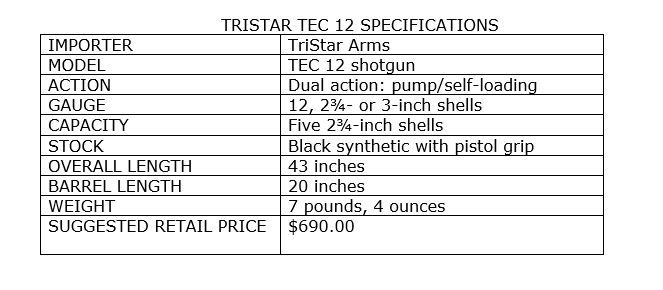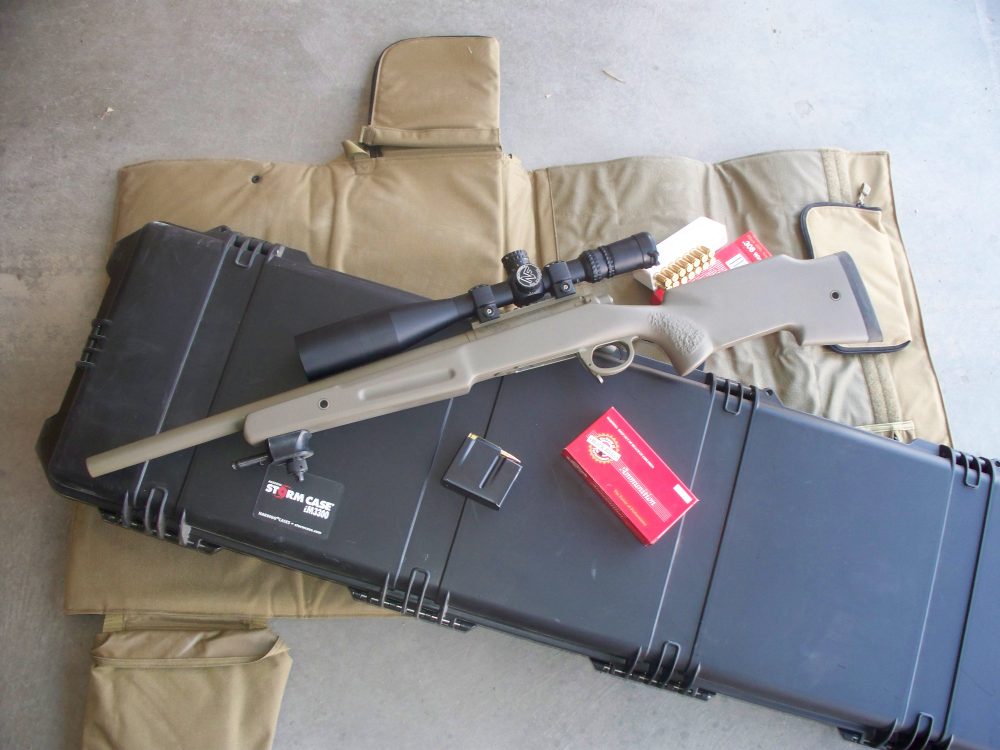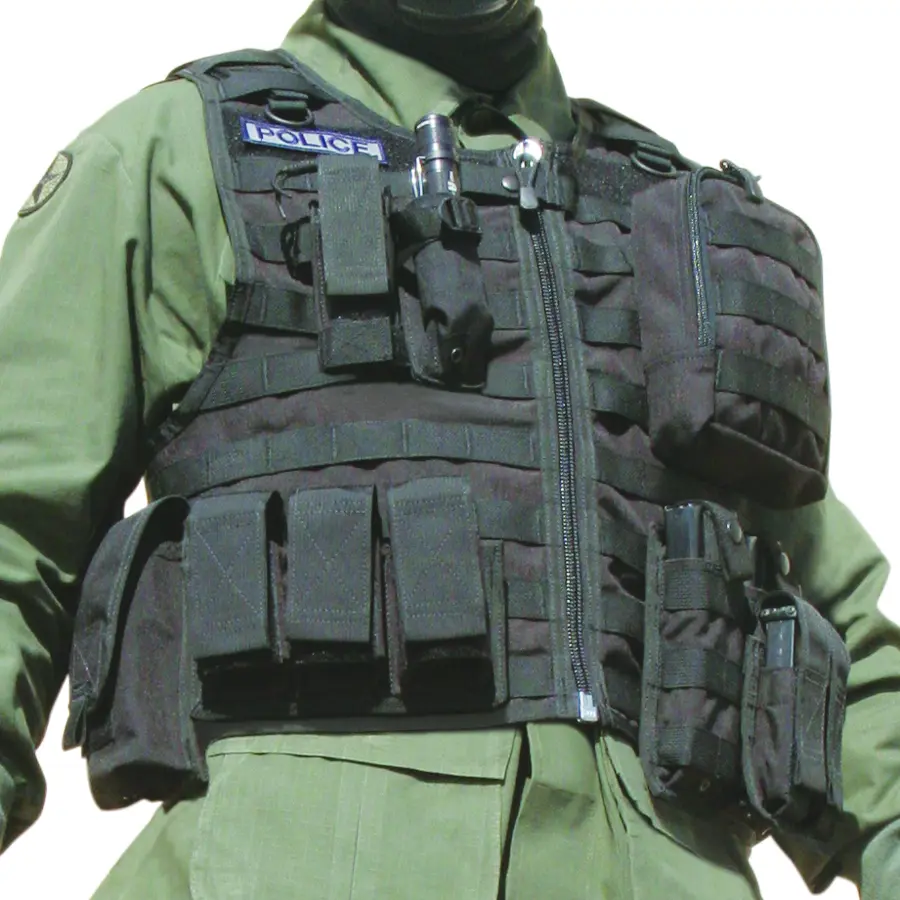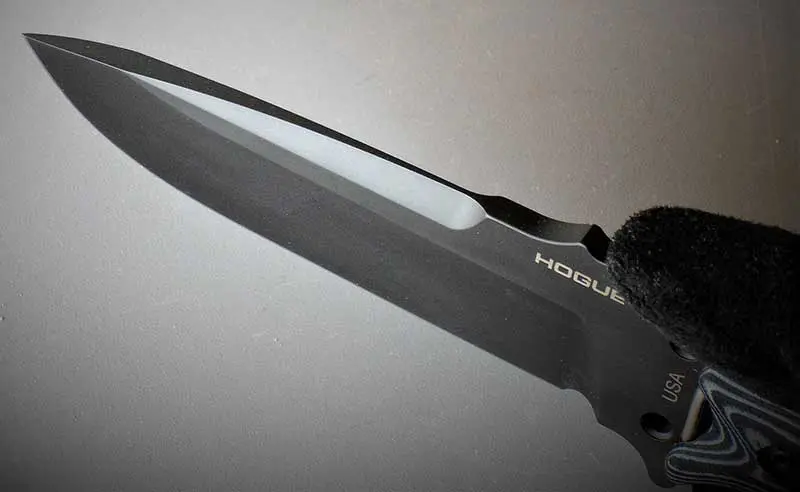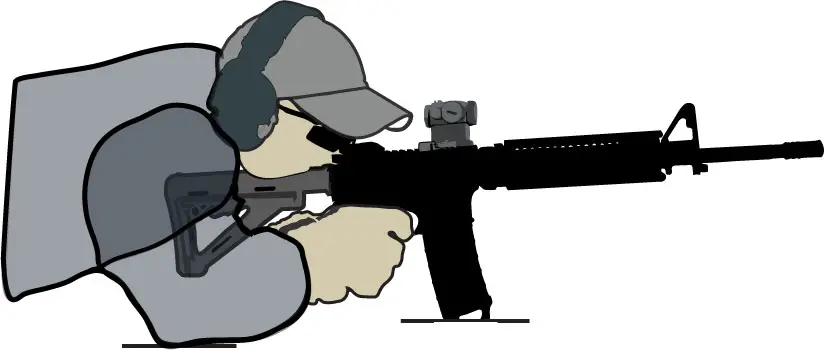TriStar TEC 12 shotgun proved reliable, fast handling, and well suited to personal defense.
I have regarded the pump-action shotgun as my “go-to” firearm for some time. This is due to police experience when the shotgun was not a personal weapon but the “community” firearm shared by many officers. It had to come up shooting every time, and there were rules concerning its storage and load.
The 870 was commonly carried in “cruiser ready” loaded with four 00 buckshot shells, empty chamber, and hammer down ready for the action to be worked.
The self-loader is a personal firearm for those who maintain their own firearms and practice often. But the self-loader might fit as an issue shotgun as well.
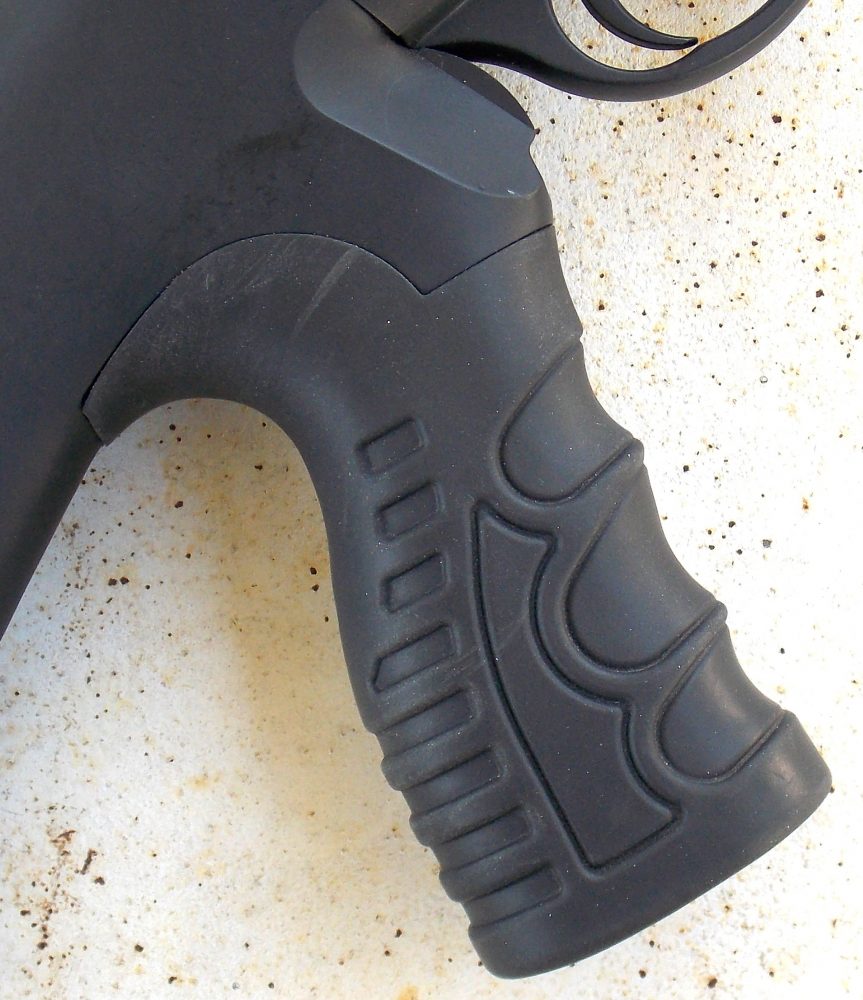
A trainer once told me that his agency went to the self-loading shotgun because officers trained on self-loading pistols and rifles, and forgot to rack the shotgun after firing the first shot.
While training will address such issues, the self-loading shotgun has many advantages. I am no longer in service, and my choices are personal. While the double-barrel shotgun or a simple bead-sighted pump shotgun may be adequate for home defense, I tend to be all I can be with my handguns and rifles, and it was time to step up to a more capable shotgun.
I settled on the TriStar Arms TEC 12 for my new shotgun. It is affordable in comparison to many tactical shotguns, but it is also reliable and effective. Training with this shotgun was a new experience, and I mean that as a good thing.
Table of Contents
DUAL-ACTION SYSTEM
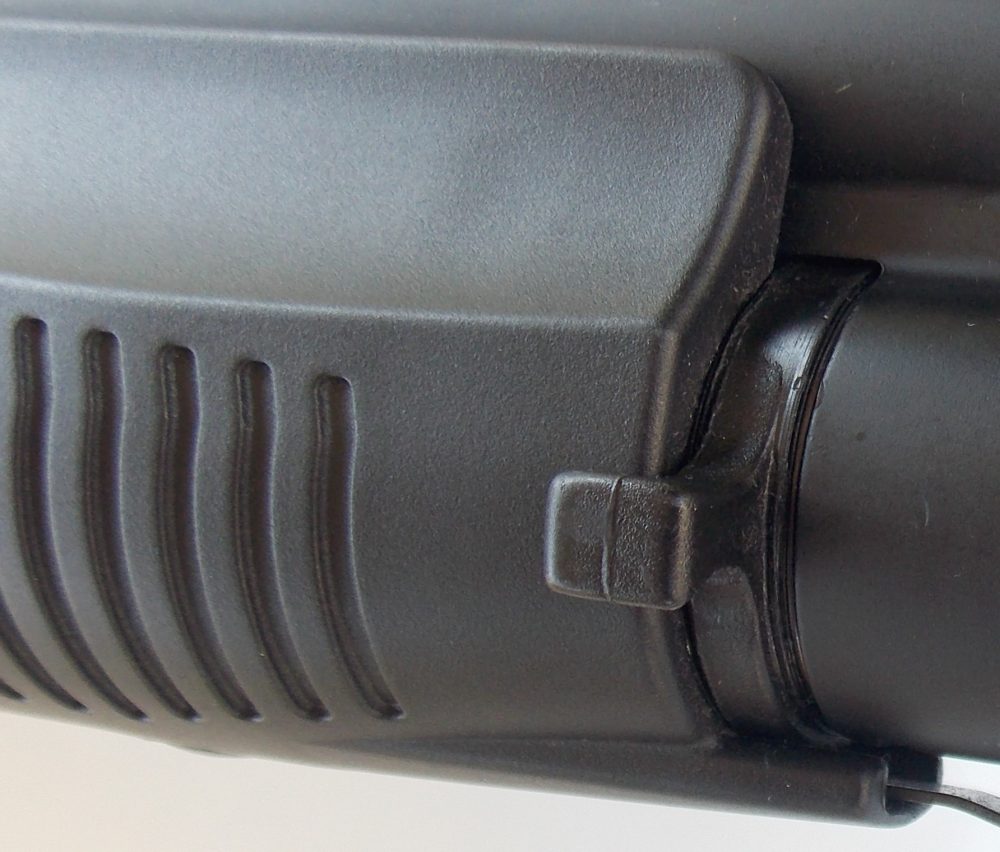
The TEC 12 bears a striking resemblance to the Benelli M3. It is arguably a clone of this shotgun. The TEC 12 uses the dual-action system that has been successful with the Franchi SPAS-12 and Benelli M3.
The shotgun’s action can be changed from self-loading to pump-action by moving a spring-loaded ring just ahead of the forend. The primary merits of the system are the ability to handle light loads the self-loader will not cycle and to launch special munitions such as flash bangs and paint markers.
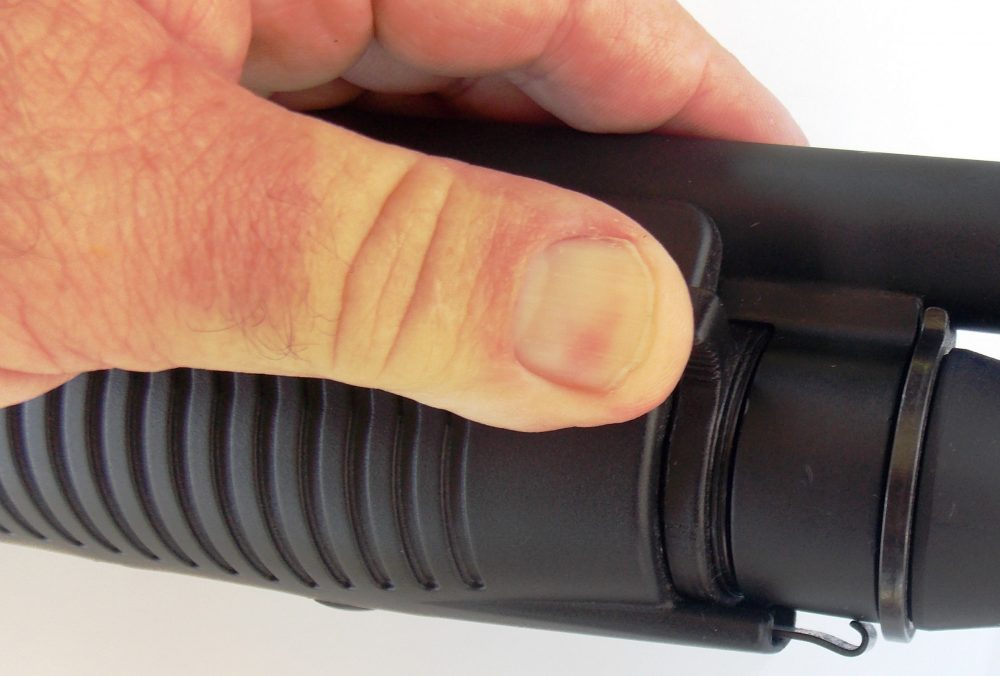
The TEC 12 should be competitive in 3-Gun competition and is a viable service and protection shotgun. The action is the proven inertia system used by Benelli shotguns. The action never requires adjustment and cycles very quickly.
There are three main parts—the bolt body, rotating bolt head, and inertia spring. No gas or powder residue is left in the action after firing. The inertia system is regarded as the cleanest of systems, versus recoil or gas operation. This means less cleaning and maintenance.
The system has proven strong due to steel locking lugs. The lighter mass of parts makes for the speed I have seen when firing the shotgun. The claims for the action have been proven in the field by the Benelli M3, and there is no reason this Turkish-built clone will not perform in a similar manner.
But the shotgun field strips as easily as the 870, and isn’t difficult to maintain. Most of my testing was done in self-loading mode.
LIGHT LOADS
A word on light loads. A staple of shotgun practice is birdshot for familiarization. When birdshot is loaded in the TEC 12 in semi-auto mode, it will feed and fire, but the case will only be partially ejected, resulting in a tie up. You cannot simply rack the bolt to feed the next load.
Practicing with light loads in pump-action mode has limited utility in deployment of a self-loading shotgun, so consider your needs before investing in this system.
Some field loads function in the action, but it takes time to discover which work well enough for practice. The pump-action mode is not recommended for heavy loads such as Magnum buckshot or heavy slug loads.
The barrel ring latches over a pair of locking lugs in the self-loading mode of operation. The action must be closed to operate the selection ring.
Move the ring counter clockwise to disengage the locking rings and pull the forend to the rear to change to the pump-action mode of operation. To return to semi-auto operation, move the ring clockwise and press the forend forward to re-engage the locking rings.
For practical purposes, my TEC 12 will be deployed as a self-loader and seldom used as a pump-action. The shotgun’s other features include a generous Picatinny rail for mounting a red dot or other optical sight. The TEC 12 is supplied with sling swivels and also has a removable choke tube.
I like a tight choke in a shotgun designated for buckshot, and this is a good option. Tight chokes are not ideal for slug use, so consider your options.
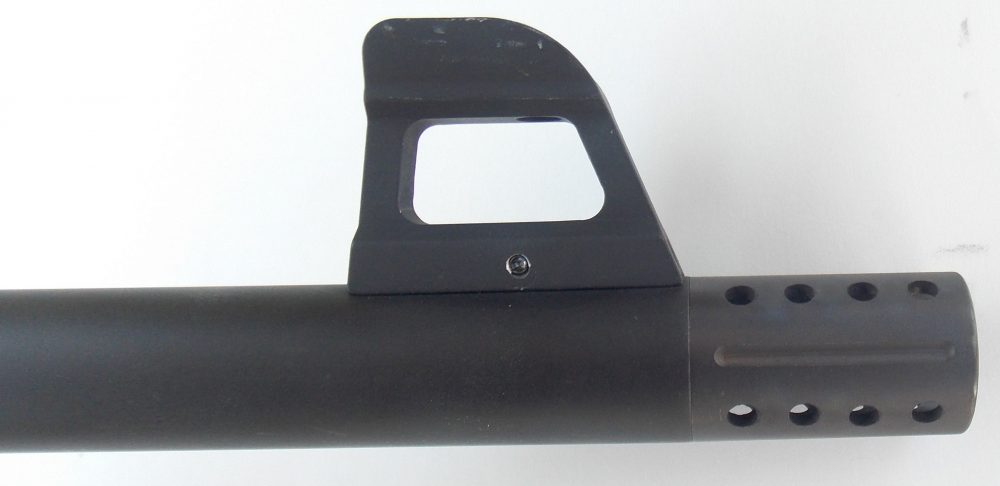
The barrel is 20 inches long. The front sight is a red fiber optic. Shielded from damage by wings, it offers an excellent aiming point. The rear sight is an adjustable ghost ring sandwiched between two protective ears.
The shotgun features a straight stock with pistol grip. The recoil pad is solid. The trigger breaks at seven pounds. During initial familiarization, I noted the TEC 12 handles quickly and the pistol grip allows good control during tactical movement.
OPERATION
Loading and firing the shotgun are straightforward. The bolt is closed and the TEC 12 is loaded by thumbing shells into the tubular magazine. Be certain you load the shells properly and the spring-loaded shell stop grabs the base of the shell. If at any time you need to unload the magazine, depress the spring-loaded shell stop on the left side.
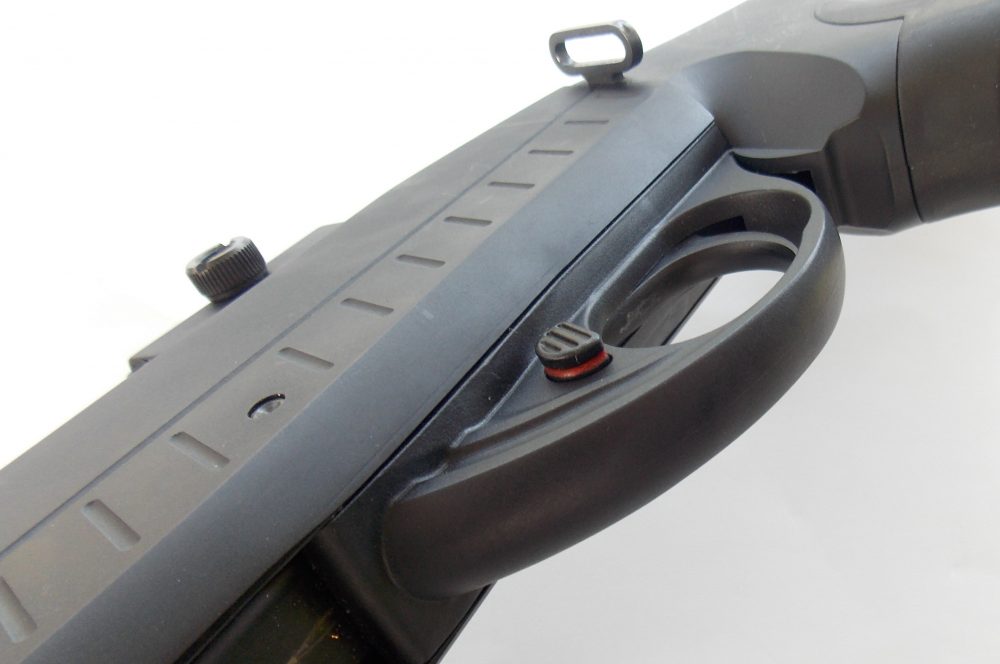
The safety is an easily manipulated push-button type in front of the trigger guard. The magazine holds five 2¾-inch shells or four three-inch shells. To load, pull back the charging handle. After firing, the bolt locks open on the last shot.
Press the button on the right side of the receiver to release the bolt. If the shotgun is locked in the pump-action mode, the bolt also locks open after the last shell is ejected, so the drills commonly used to load a self-loading shotgun—dropping a shell in the breech and pressing the bolt release—are useful with the pump-action mode as well.
I have had experience with self-loading shotguns that were reliable with only full-power loads, and others that required changing action rings or gas blocks for reliability. I fired a wide variety of 12-gauge loads in the TriStar shotgun. Reliability was never in question with full-power buckshot, including reduced-recoil loads.
FIRING THE TEC 12
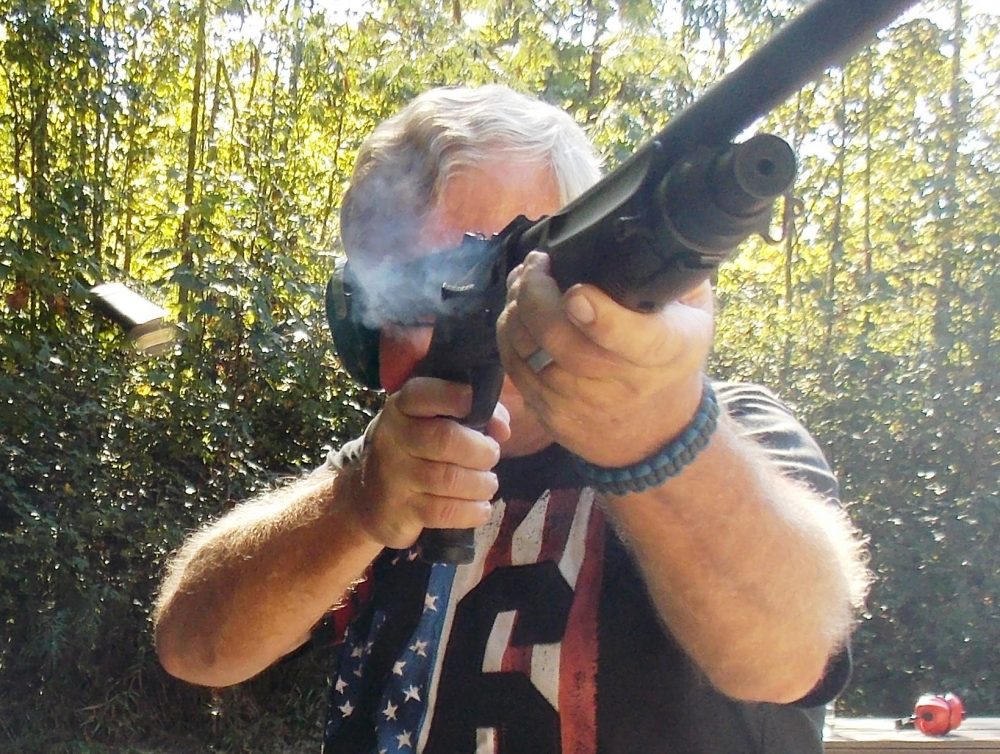
I would think that the inertia action operates based on the weight of the shot, while a gas-operated action operates on the gas generated. I began with a mix of slugs and buckshot. These included full-power Federal three-inch slugs, Fiocchi one-ounce Aero slugs in both reduced- and full-power variants, Winchester three-inch Magnum 00 Buckshot (the hardest kicker), and Hornady Varmint Express #4 buckshot.
The TEC 12 functioned with every load. The action was very fast, with even the lighter loads sending the spent empty shells spinning. Recoil was stout with the three-inch shells, but less brutal than the pump-action Remington 870 I normally deploy. The vented choke may dissipate some recoil energy.
Patterns seem better than the average cylinder choke. While I prefer heavier buckshot, the Hornady Varmint Express gave excellent patterns at 15 yards.
Next I fired the shotgun with a selection of loads I normally keep on hand for use in my personal shotguns. These include Hornady Critical Defense 00 Buckshot, Fiocchi Aero slugs, and Winchester 12-gauge PDX. The first is a reduced-recoil buckshot load, the second a full-power one-ounce slug, and the PDX is a defense load with a one-ounce slug and three 00 buckshot.
I began from low ready, brought the shotgun quickly to the shoulder, and fired two magazines of each buckshot load at seven and ten yards. The pattern was centered and tight, measuring 4×7 inches at ten yards. The action cycled quickly. Next I fired two magazines of the PDX load. Accuracy was good. The three buckshot balls riding on top of the slug give the PDX a “buck and ball” mix in a single shell.
Living in a rural area, I prefer full-power slugs for defense against large animals, for penetration and use at extended ranges. Reduced-recoil slugs are good for some uses but not ideal at long range.
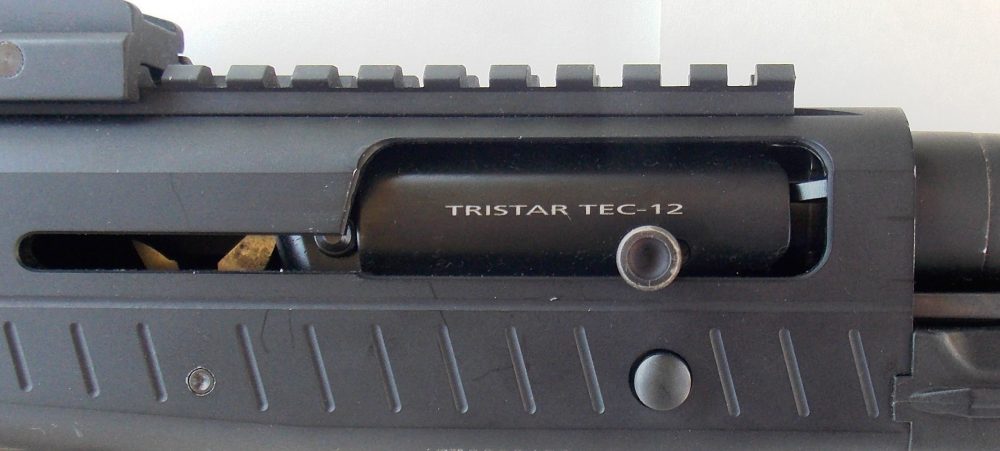
I was limited to 20 yards in testing the Fiocchi slug, but accuracy was excellent. The TEC 12 was properly sighted for 20 yards and placed one slug literally on top of the other. Three slugs went into less than two inches.
The shotgun requires training. While a great problem solver, the 12 gauge doesn’t solve those problems without training, and having a shotgun you have not trained with on hand is like keeping a Harley Davidson you have not ridden just in case you need to get somewhere fast.
I concentrated on the self-loading mode and largely ignored the pump-action mode of operation, although it is good to have.
I found the TriStar TEC 12 an excellent shotgun for defensive use. As a truck gun or for protection in the wild, it is a well-designed and capable firearm.
SOURCES
TRISTAR ARMS INC.
(816) 421-1400
www.tristararms.com
FEDERAL PREMIUM AMMUNITION
(800) 379-1732
www.federalpremium.com
FIOCCHI AMMUNITION
(417) 725-4118
www.fiocchiusa.com
HORNADY MFG. CO.
(800) 338-3220
www.hornady.com
WINCHESTER AMMUNITION
(615) 258-3340
www.winchester.com
